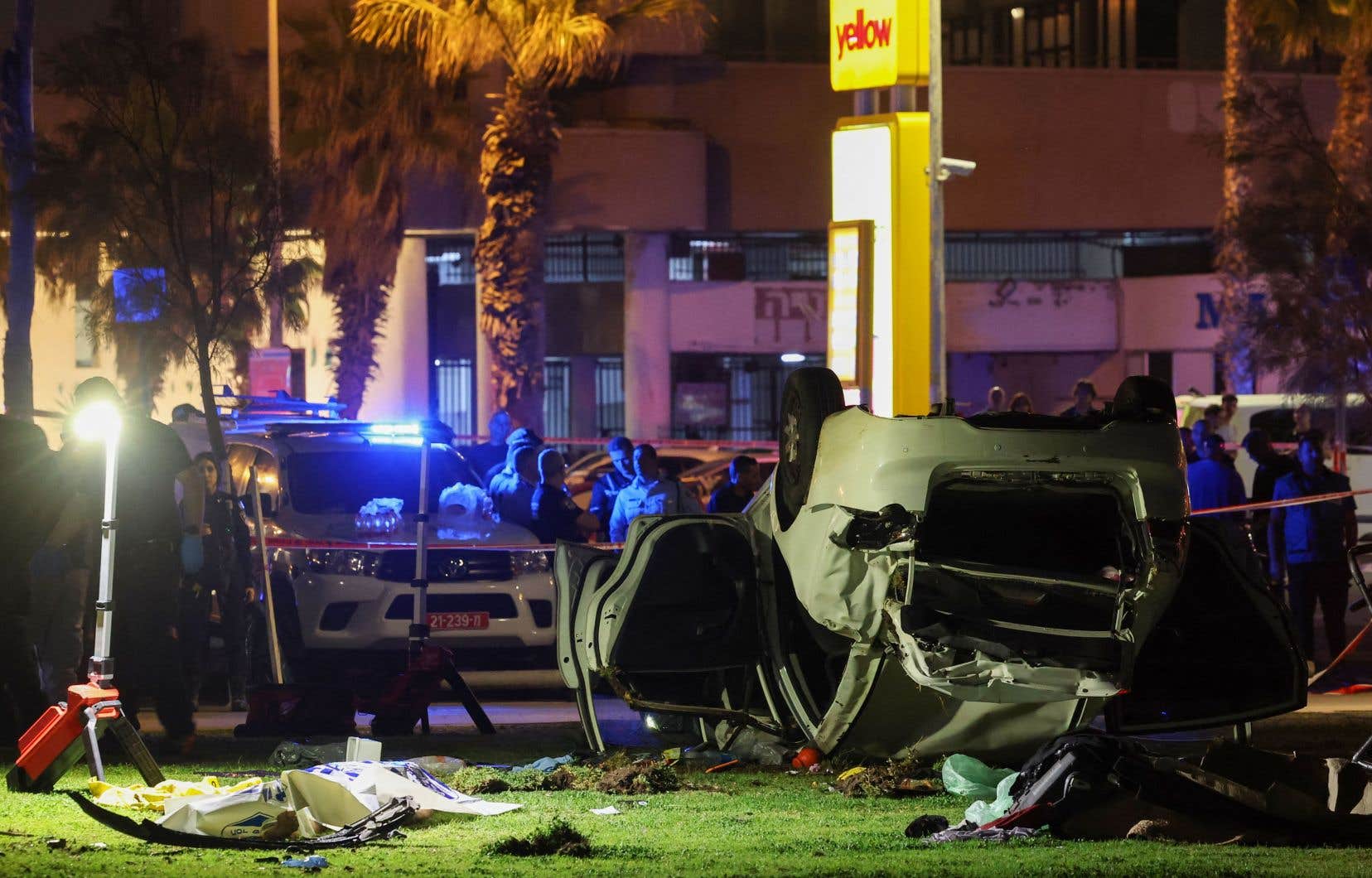Israel is preparing to reinforce its troops on Saturday in the aftermath of two attacks that claimed the lives of three people, the latest episodes in a new cycle of violence in the Middle East.
On Friday evening, an Italian tourist was killed on the Tel Aviv waterfront and seven other people, aged between 17 and 74, injured in a car bombing, some of whom were also Italians.
Police said the 45-year-old driver who was shot was from the Arab town of Kfar Kassem in central Israel.
Three people are still at Ichilov Hospital in Tel Aviv with minor injuries, the facility said.
At the scene of the attack, passers-by placed flowers on an Israeli flag and others lit candles, noted an AFP journalist.
Italian President Sergio Mattarella condemned a “despicable terrorist act” while the anti-terrorist pole of the Rome public prosecutor’s office opened an investigation.
After this attack, which occurred on a Shabbat evening and during the week of Passover, Prime Minister Benjamin Netanyahu “ordered the police to mobilize all the reserve units of the border police, and to [l’armée] to mobilize additional forces.
Police said four reserve border police battalions would be deployed to city centers on Sunday, in addition to units already mobilized in the mixed city of Lod and the Jerusalem area.
The Ministry of Defense confirmed on Saturday evening that it was mobilizing soldiers to support the police and announced that it would tighten entry restrictions into Israel for Palestinians from the West Bank and Gaza Strip, in particular workers.
Earlier on Friday, two sisters from the Israeli settlement of Efrat, aged 16 and 20 and holders of Israeli and British nationalities, were killed and their mother seriously injured in a Palestinian attack on their car in the West Bank, occupied Palestinian territory by Israel since 1967.
“Legitimate response”
The Palestinian Islamist movement Hamas claimed that the attack in Tel Aviv was a “natural and legitimate response” to the Israeli “aggression” in the Al-Aqsa mosque in Jerusalem.
The current outbreak of fever indeed follows violence on Wednesday on the esplanade of the Mosques, the third holiest site in Islam and the holiest site in Judaism, also the epicenter of tensions in the Holy City.
The Israeli forces brutally burst inside the Al-Aqsa mosque to dislodge the faithful gathered for night prayers, in the middle of Ramadan, arousing numerous condemnations.
Mr. Netanyahu claimed that the forces had been “forced to act to restore order” in the face of “extremists” barricaded in the mosque. Hamas, which has waged several wars against Israel, denounced an “unprecedented crime”.
After the violence, Israel carried out strikes targeting Hamas infrastructure in Gaza and southern Lebanon, in response to the firing of dozens of rockets on its territory.
The Israeli army claimed that the unclaimed shots were “Palestinian”, probably from Hamas.
” De-escalation “
On the Israeli-Lebanese front, this is an unprecedented escalation since 2006.
Prime Minister Netanyahu has promised to make Israel’s “enemies” pay “a heavy price” for “every aggression” against his country.
Hezbollah, a Shiite organization with a strong presence in southern Lebanon, said that “the whole axis of resistance is on high alert”, after openly supporting Palestinian groups against Israel.
Israel and Lebanon are technically in a state of war after different conflicts and the ceasefire line is controlled by the United Nations Interim Force (UNIFIL), deployed in southern Lebanon.
According to her, “both sides have said they don’t want a war”.
Qatar, which has already served as a mediator between Israel and the ruling Hamas in Gaza, “is working towards de-escalation”, a Qatari official told Agence France-Presse (AFP) on Friday, on condition of anonymity.
Since the beginning of January, the Israeli-Palestinian conflict has claimed the lives of at least 91 Palestinians, 18 Israelis, a Ukrainian and an Italian, according to an AFP tally compiled from official Israeli and Palestinian sources.
These figures include, on the Palestinian side, combatants and civilians, including minors, and on the Israeli side, mostly civilians, including minors, and three members of the Arab minority.
